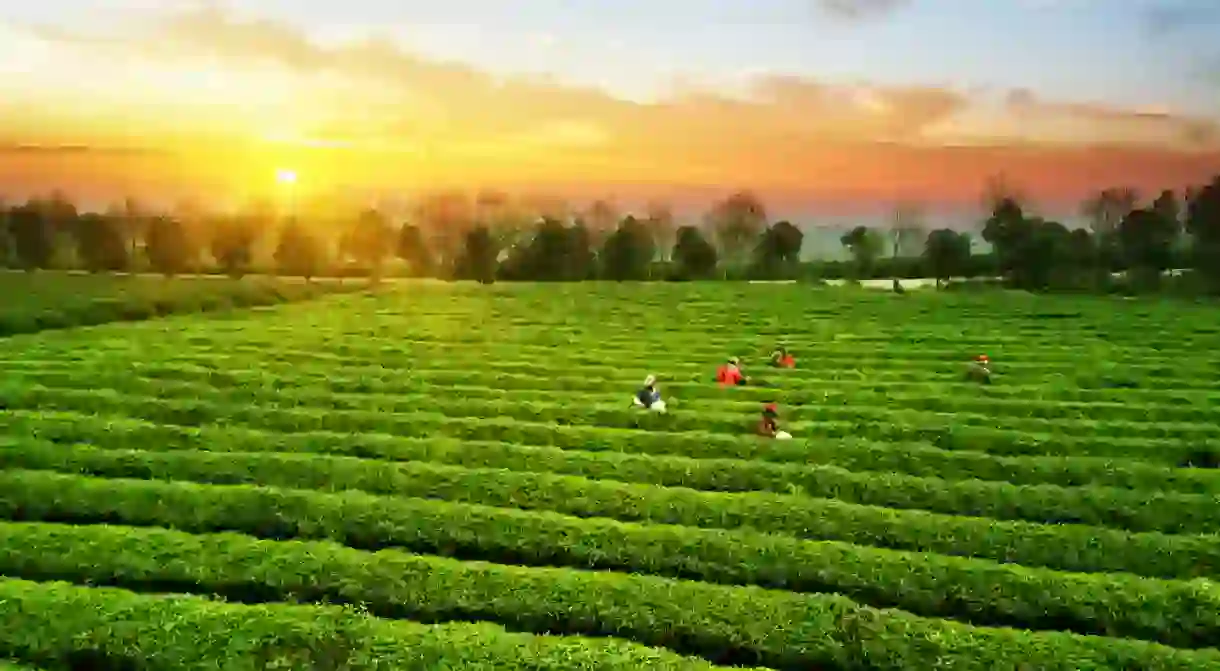The Most Beautiful Tea Plantations in China

All over China, tea farmers are hard at it, working in the trees, moving freshly picked leaves from the field, carefully drying the plants and shipping their goods out. It’s a practice that they’ve been perfecting for centuries. Here’s a glimpse of life on the plantations, though it’s better to check it out for yourself, as pictures rarely do it justice.
Yunnan Province
All together, the various tea plantations on Jingmai Mountain create the largest collection of tea production in the world. More than a million trees grow there – a chunk of which are some of the oldest wild tea trees in China. A handful of growing tourism agencies offer trips to the various farms, tea factories, and shops. If you can get in on a tea ceremony, you’ll likely be served pu’er tea, as it’s the style that reigns supreme in this region.

Hunan Province
In the shadows of the jagged Hunan Province, column-shaped sandstone Zhangjiajie mountains (known for looking like floating islands, because of low hanging fog) farmers pluck tea from the vines. Granted, you might not see much of the surrounding mountains, thanks to the misty nature of the area. But, that warm, temperate climate is what helps the tea grow.

Sichuan Province
The humid climate of the Sichuan province lends itself well to the production of tea. From a distance, the tea farms could almost be mistaken for rice paddies. Here, the most popular tea styles in Sichuan are green and black.

Fujian Province
Located on the South East coast, Fujian Province has been developing its tea techniques since the Song Dynasty. The area is known for the high quality of its teas, particularly oolong and white varieties. Like the majority of tea plantations in China, you’re more likely to catch farmers here on a foggy day. But, if you’re lucky, you might get some clear skies!














